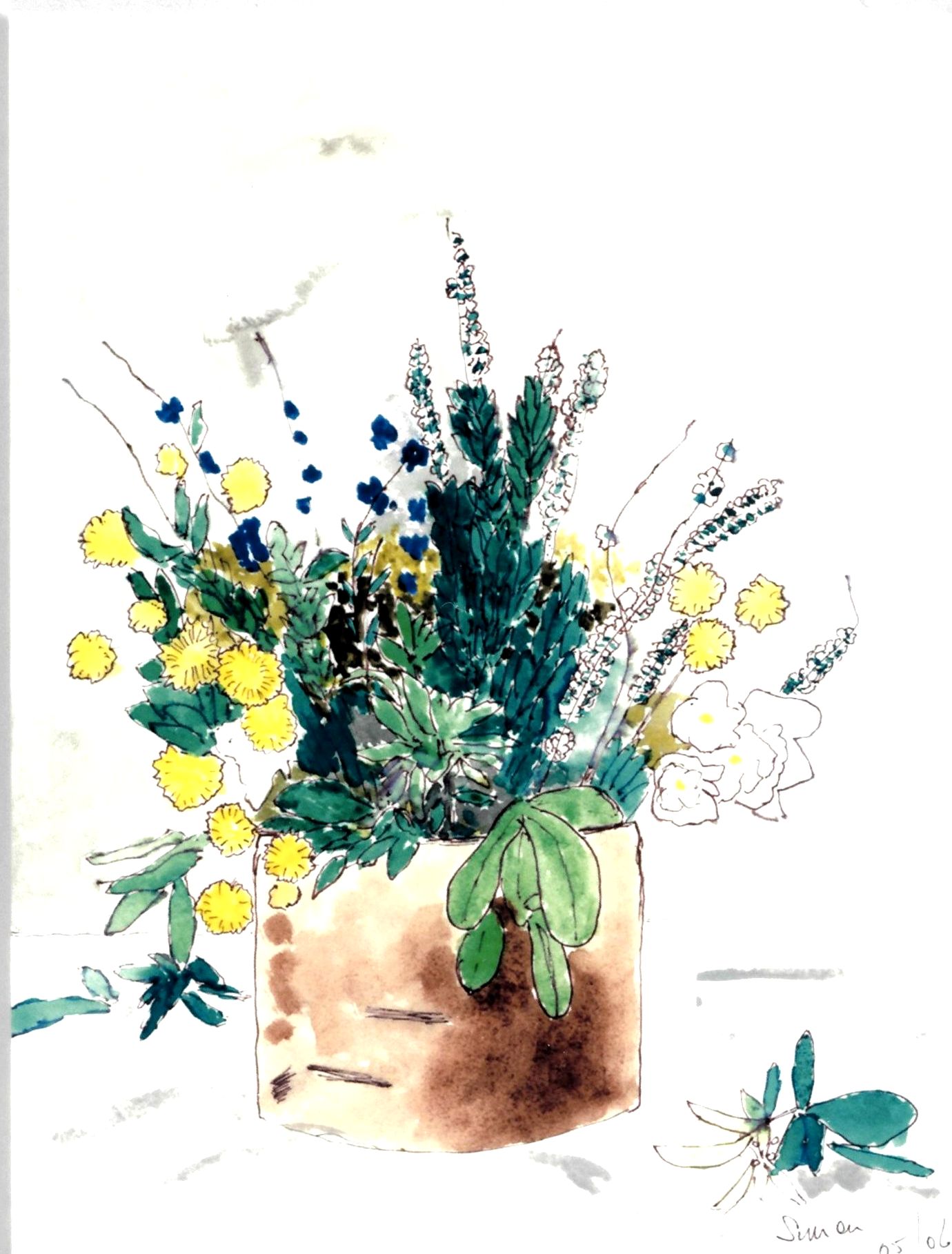RampArts - Community Art Group
Recipe 10: Still Life in Watercolour
METHOD
We have come to watercolour at the last session because it is really the most difficult medium to use. Despite this you will probably have a box of watercolours with which you do most of your pictures and would say that oil paint is too difficult and poster paint should be kept in school! However, to create lovely washes of colour which are gradually built up and leaving areas where the perfect handmade paper glows through is a job for the real professional. If you really hanker after this skill there are many Teach Yourself books written to help you learn.
Meanwhile, set up a still life. Again using a vase of flowers but with an abundance of foliage. A big handful of wild flowers pushed into a glass jug is ideal. Add fruit, cloths and anything else that takes your fancy making dark and light areas. The effect should be "busy" so that it is difficult to see the details. Compose your picture carefully using the wondow frame. Draw straight on to the paper with your pen. Don't be afraid of making a mistake - if it's wrongdraw the line again over the top. The still life has been designed for an ipressionist approach.
Now for the watercolour: put tiny dabs of paint into the centre of the palette. Mix colours with lots of water in the outside circles. Start with very light shades.
Watercolour is exactly the opposite to poster paint where light colours are acheived by mixing with white and using thick paint. Instead the white of the paper shows through thin washes of colour. Thin washes of colour can be layered on top of others to create darker tones. The effect of the washes of paint are part of the overall attractiveness of the medium.
RESULTS
Were you pleased with your results? Were you surprised by the different effects you acheived? Have you framed some of your pictures? Has your group grown? I hope that you have enjoyed this short course of painting. Which materials did you prefer?
WHAT DID YOU LEARN?
To use watercolour with plenty of water! To see the differnt effect it creates with the white of the paper showing through
